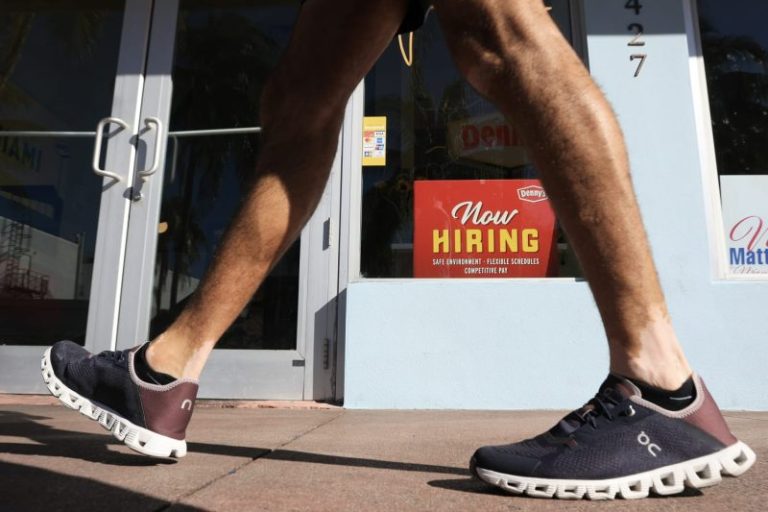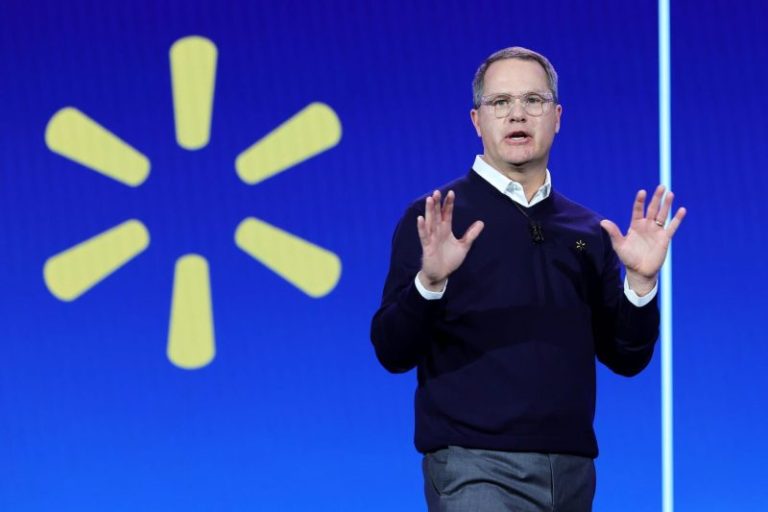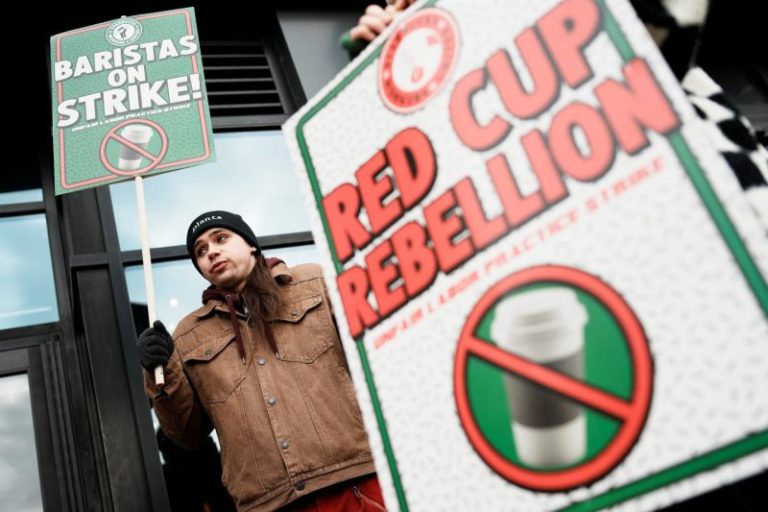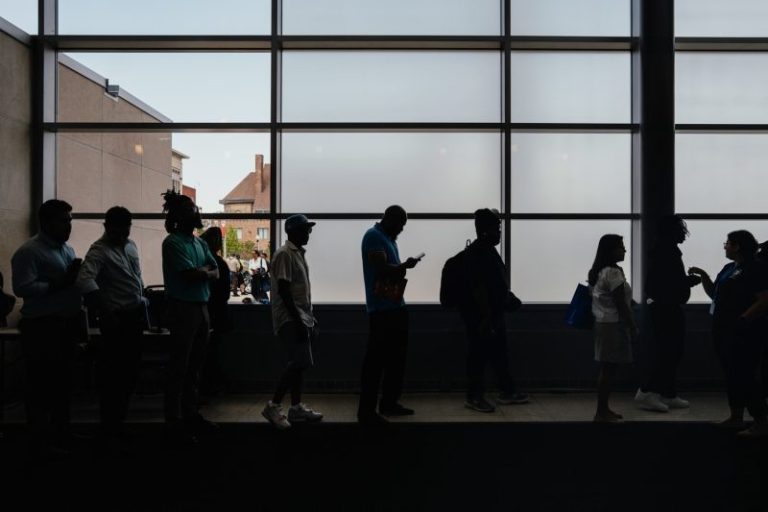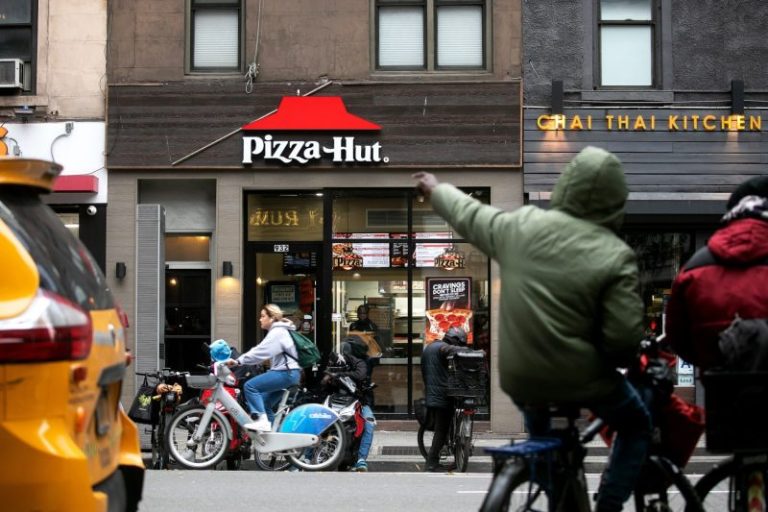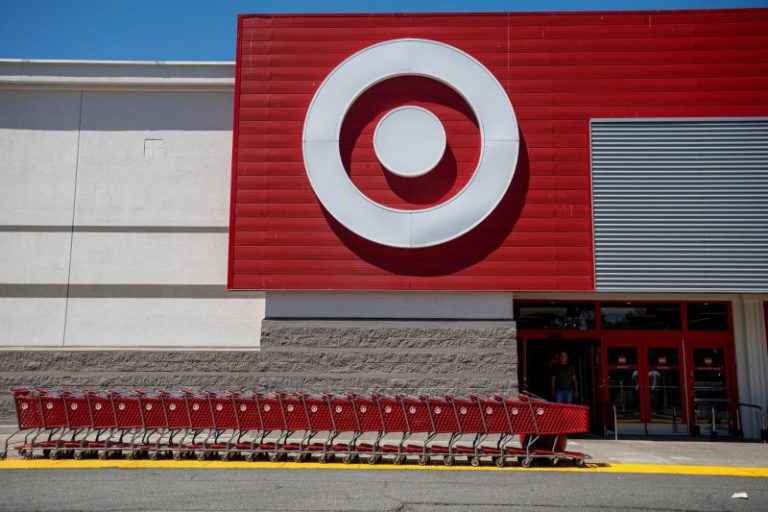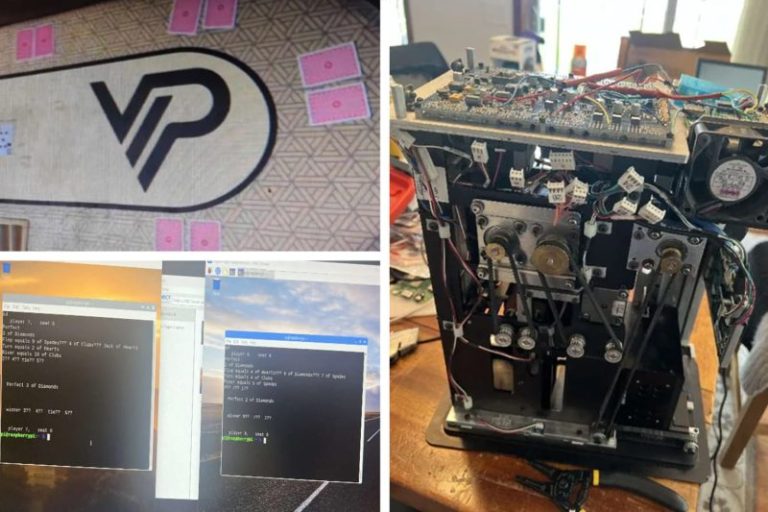Shoppers are still flocking to Walmart.
The company raised its full-year earnings and sales outlook Thursday, heading into the crucial holiday shopping season.
Walmart also offered fresh signs that it is shedding its original identity as a strictly down-market brick-and-mortar operation by growing its e-commerce business and increasing its market share of higher-income shoppers.
Walmart’s shares closed more than 6% higher Thursday, even as the broader market suffered a dramatic sell-off. The stock is up more than 18% this year.
The biggest retailer and grocer in the United States acknowledged the added financial pressures on lower-income households but said middle-income families are holding up. Walmart saw more sales growth in its grocery and health and wellness product categories than in general merchandise.
‘As pocketbooks have been stretched, you’re seeing more consumer dollars go to necessities versus discretionary items,’ Chief Financial Officer John David Rainey said on a call with analysts Thursday morning.
The company reported that same-store sales for Walmart U.S. rose 4.5% in the quarter that ended Oct. 31, exceeding analysts’ expectations.
“The team delivered another strong quarter across the business. eCommerce was a bright spot again this quarter. We’re gaining market share, improving delivery speed, and managing inventory well,” outgoing CEO Doug McMillon said in a statement.
Walmart reported 27% growth in e-commerce sales globally.
Walmart also announced that it will move from trading on the New York Stock Exchange to the tech-heavy Nasdaq next month. It’s the latest sign of America’s largest private employer working to position itself as tech-forward in order to compete with Amazon.
The discounter’s third-quarter earnings come amid growing questions about whether Americans contending with tariffs, corporate layoffs and accelerating inflation are still confidently spending on retail.
As a bellwether for the U.S. economy and consumer confidence, Walmart’s strong earnings and guidance indicate that consumers are still shopping — at least at the lower end of the retail price point.
The company announced last week that McMillon will step down in January. McMillon, 59, started at Walmart as an associate in the 1980s and has helmed the company since 2014.
Under his leadership, Walmart improved pay and benefits for many employees, renovated hundreds of stores and boosted its e-commerce and delivery programs, especially during the Covid pandemic.
John Furner, CEO of Walmart U.S., will take over the top job Feb. 1. Since 2019, Furner has led Walmart’s American operations — by far the largest slice of the company, with around 1.6 million of Walmart’s approximately 2.1 million total associates worldwide.
Walmart is leading the retail race against longtime rival Target, which Wednesday reported a drop in third-quarter sales and cut its full-year profit guidance.
Target’s sales have faltered over the last few years, with some consumers expressing frustration over what they said were disorganized stores and rollbacks of the company’s diversity, equity and inclusion initiatives.
In October, Target said it would cut about 1,800 corporate jobs.
Target is hoping for a fresh start in the new year. Incoming CEO Michael Fiddelke will take over Feb. 1, the same day Furner becomes CEO of Walmart.
The struggling retailer said Wednesday that it plans to increase its investment in stores and technology next year by 25%.
Since January, U.S. businesses have had to contend with ever-changing tariffs under the Trump administration. Walmart has navigated the uncertainty by raising prices on some items, while swallowing some tariff costs on others. In the three months that ended Oct. 31, prices at Walmart U.S. rose around 1% overall, with higher prices on electronics, toys and seasonal items in particular due to tariff pressures.
In the grocery section, Walmart expects egg prices to drop but anticipates the record-breaking beef prices will stay high, in part from cattle herds shrinking over the last few decades.
Prices for other grocery staples are also up, though the Trump administration’s rollback of tariffs on many food items last week could offer some relief.
Despite the rising prices, Walmart is offering its annual Thanksgiving menu deal for 10 at less than $4 per person. It’s less expensive than last year’s package, but it also contains fewer items.
The company is also expanding its use of artificial intelligence, teaming up with OpenAI to allow customers to buy from Walmart within ChatGPT. Walmart has not detailed the terms of the partnership or shared when the new option could be available.
This week, Target announced its own collaboration with OpenAI.
Walmart has lagged behind rival Amazon in AI-driven e-commerce — Amazon debuted its Rufus shopping assistant in February 2024, more than a year before Walmart launched its counterpart, Sparky.


